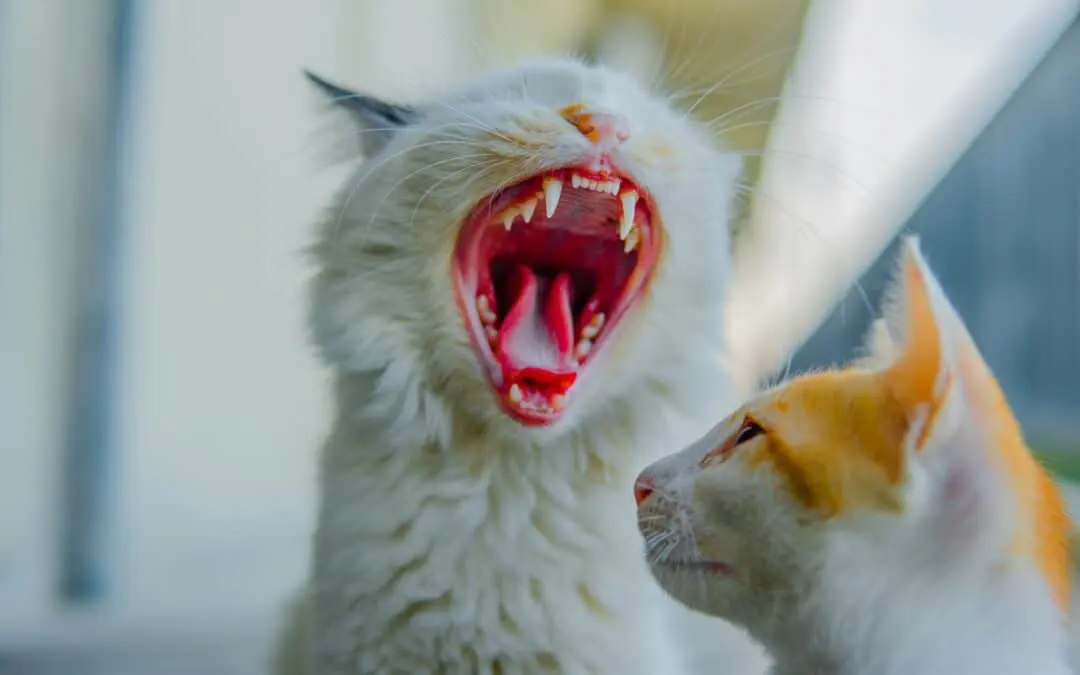Healthy, adult cats should have 30 teeth in total. Besides eating, cats also use their teeth for hunting or playing, and sometimes in self-defense. However, cats can fall victim to some painful dental conditions that cause tooth loss and tooth resorption. Understanding how many teeth your cat should have and how to take care of them can help you keep your cat happy and healthy for years to come.
Kittens Have 26 Tiny Teeth
Like humans, cats are diphyodont—this is a fancy way to say we both have two sets of teeth, baby teeth and adult teeth. Kittens start growing their first set of teeth as early as two weeks, with all 26 little teeth erupting by 6-8 weeks. Kittens start losing their baby teeth at about 3 months, when their adult teeth start to emerge.
Adult Cats Have 30 Teeth
By the time your cat is 6 months old, they will have all 30 of their adult teeth. Like their wild ancestors, adult cats will use their teeth to eat, hunt and protect themselves. With proper care and check-ups your little tiger should be able to keep all their teeth throughout their life.
Types of Cat Teeth
Cats have four different types of teeth. And although they do have molars, they are shaped differently than the teeth of omnivores like you. As carnivores, cats’ teeth do not have flat surfaces for grinding food, so they are not suited to eating plant materials. Here are the different types of cat teeth and how they’re used.
Incisors
Number on Top: 6
Number on Bottom: 6
Uses: These tiny teeth in the front of your cat’s mouth are for cutting. You might also notice your cat use these teeth in play, to ensure they don’t hurt you or their toys.
Canine Teeth
Number on Top: 2
Number on Bottom: 2
Uses: These sharp fangs are used for both hunting and protection. Their long, curved, and sharp nature makes them perfect for puncturing skin and holding on. This can cause a lot of damage and pain for their victims, and prevent their prey from escaping once caught. Indoor cats might not use these teeth as often as outdoor cats do.
Premolars
Number on Top: 6
Number on Bottom: 4
Uses: Wide and large, these are the teeth they use to chomp and hold the cat’s prey. They also aid in chewing kibble.
Molars
Number on Top: 2
Number on Bottom: 2
Uses: Similar to molars, these teeth are used for crunching extra hard materials like bones, but indoor kitties use them to crush kibble.
Why Dental Care for Your Cat Is So Important
Dental care is very important at every stage of a cat’s life. If you brush your cat’s teeth every day, starting from the time you adopt them, it will help prevent cavities and gum disease. A proper diet can also help keep your cat’s teeth healthy by providing the nutrients cats need and the right type of food for their teeth.
Cats can suffer from many dental diseases, but one of the most common dental problems in cats is tooth resorption. With this condition, the tooth decays from the inside out, causing severe pain and loss of appetite. Cats are very good at hiding their pain, so regular dental checkups are a must, especially for older cats, because they are more likely to suffer from tooth decay.
Dental Care for Your Cat
The veterinarians at East Valley Animal Hospital are here to help you take good care of your cat’s oral health. With our state of the art dental techniques and extensive knowledge of feline health, we can make sure your cat never suffers the pain of an infected tooth. Contact us today to schedule a dental appointment or general checkup for your beloved pet.
Images used under creative commons license – commercial use (3/31/23). Photo by Lino Jacob on Unsplash.

